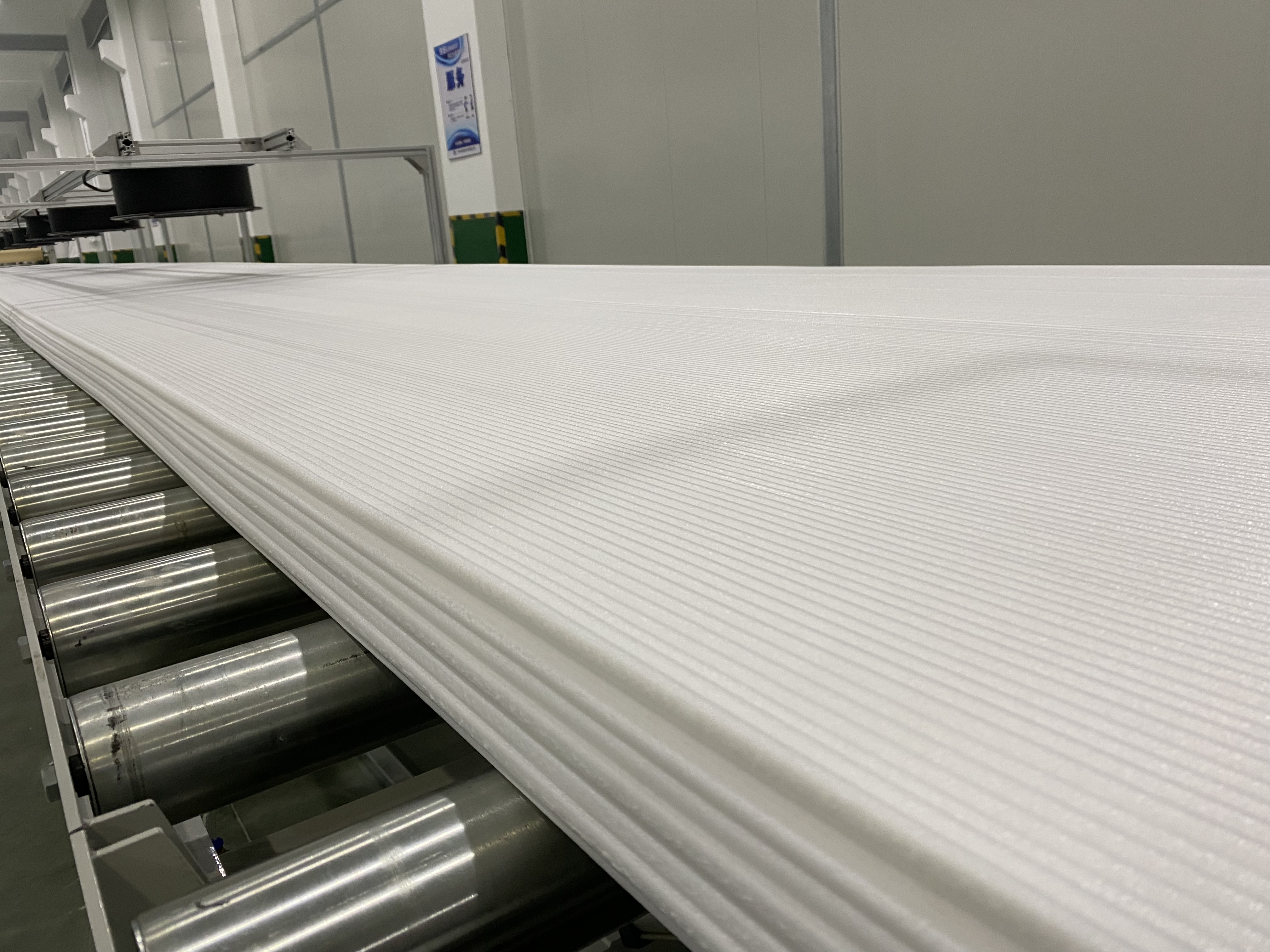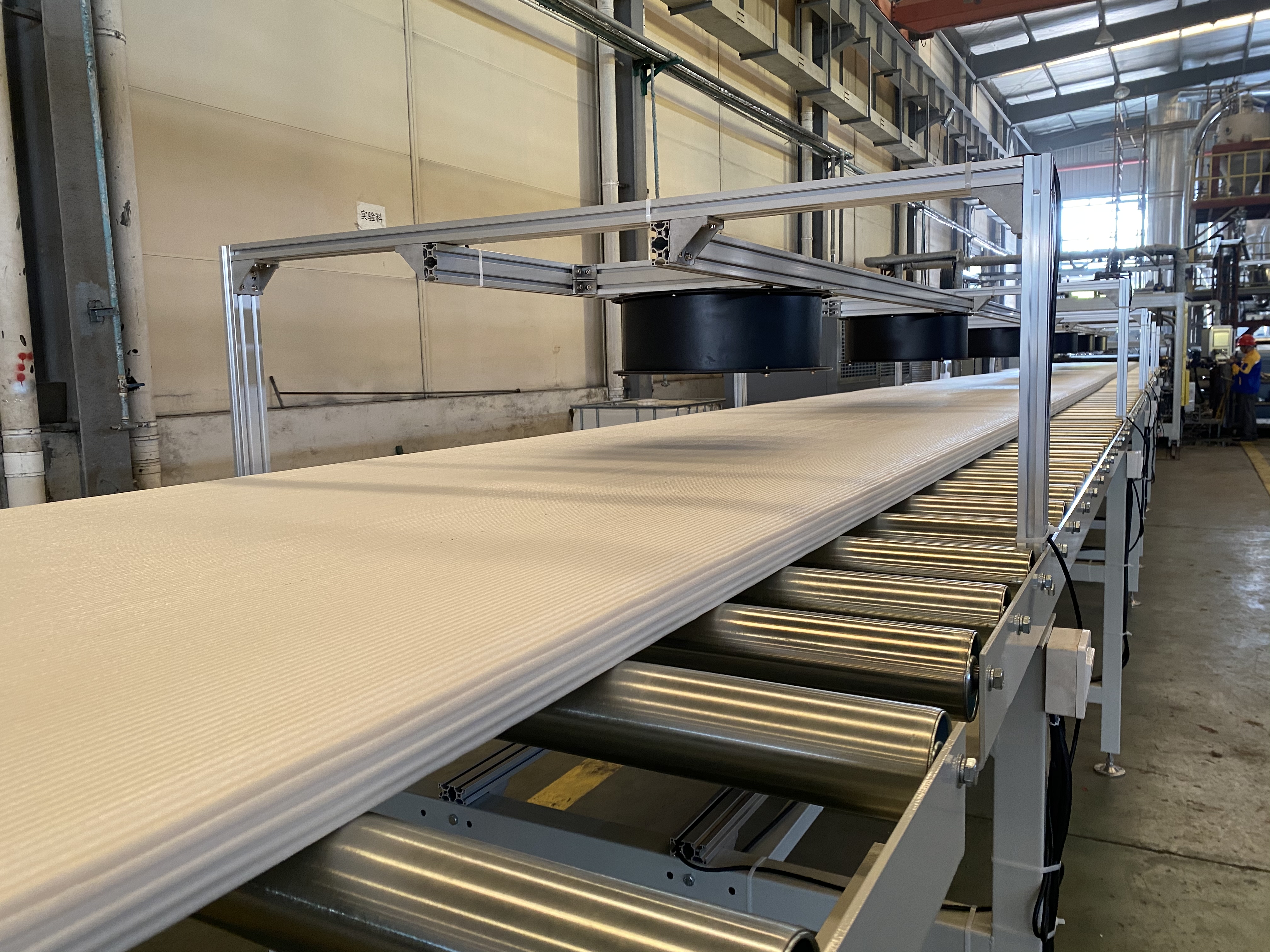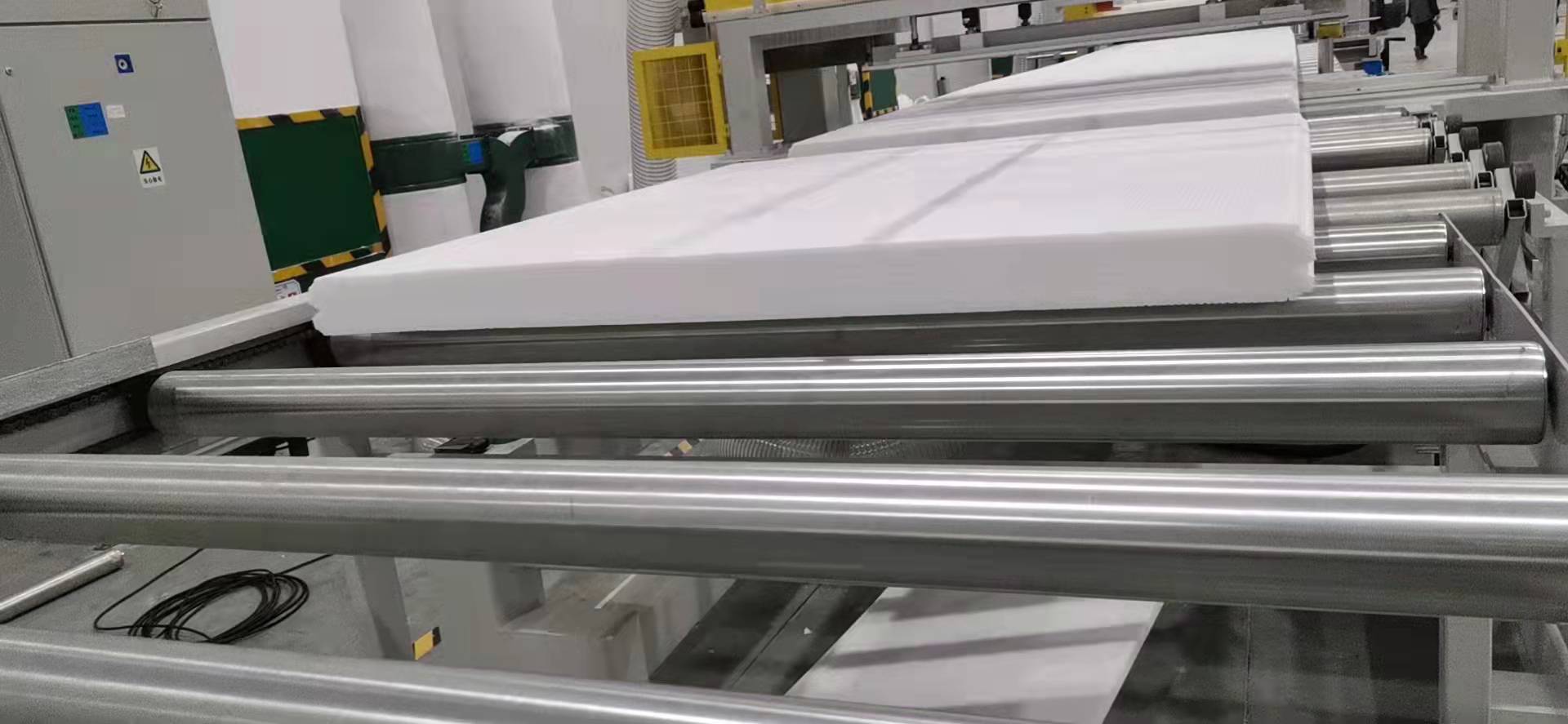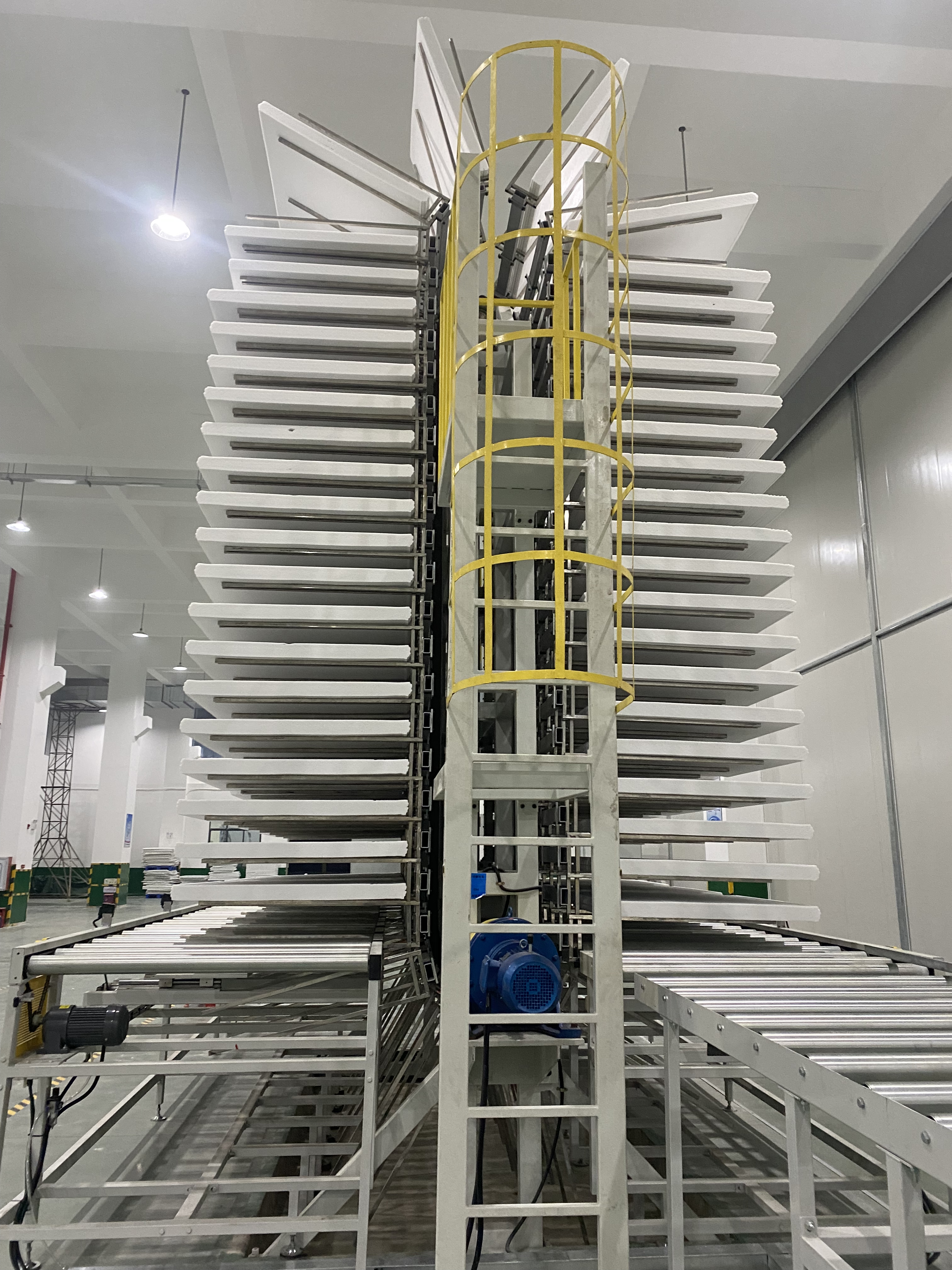Polyethylene terephthalate (PET) is one of the most widely used thermoplastic materials in modern packaging and industrial applications. Known for its excellent transparency, rigidity, and recyclability, PET sheets are now a preferred choice for food containers, blister packaging, and decorative panels. The growing demand for recyclable materials has made PET sheet extrusion a key process for sustainable manufacturing.
A PET sheet extrusion line transforms PET raw materials—either virgin or recycled flakes—into high-quality sheets through precise melting, filtration, and calendering processes. Manufacturers like Feininger have developed advanced extrusion systems that ensure consistent sheet quality, energy efficiency, and compatibility with 100% recycled PET.


Understanding PET Sheet Extrusion
PET sheet extrusion is a continuous process where PET granules or flakes are melted, filtered, and formed into thin, uniform sheets. These sheets can later be thermoformed into containers, trays, or packaging films. The process ensures uniform thickness, smooth surfaces, and excellent optical clarity.
Feininger’s PET sheet extrusion line combines intelligent control, efficient heating systems, and high-performance screw design to achieve superior melting quality and productivity. The entire process emphasizes energy conservation and recyclability, aligning with global sustainability trends in plastics processing.

The PET Sheet Extrusion Process Step by Step
The process of producing PET sheets involves several critical stages. Each stage contributes to the final sheet’s mechanical, optical, and dimensional properties.
https://youtu.be/JXZ4ytQkvh0
1. Raw Material Preparation
The production begins with PET resin in the form of pellets or recycled bottle flakes (rPET). Since PET is highly sensitive to moisture, the material must be thoroughly dried before extrusion. A dehumidifying dryer is typically used to reduce the moisture content below 50 ppm. Proper drying prevents hydrolytic degradation during melting, ensuring better strength and transparency.
2. Extrusion and Melting
The dried PET material enters the extruder, where it is heated and melted by controlled temperature zones. Depending on the application, either a single-screw or twin-screw extruder is used. Feininger’s co-rotating twin-screw extruder provides excellent mixing and plasticizing performance, especially when processing 100% recycled PET flakes.
The screw design and temperature profile are optimized to achieve uniform melting without thermal degradation. Precise temperature control across the extruder ensures stable viscosity and homogeneous flow, which is crucial for consistent sheet quality.

3. Filtration and Melt Delivery
After melting, the PET melt passes through a melt filter or screen changer to remove impurities and solid contaminants. This step ensures the clarity and cleanliness of the final PET sheet. A melt pump is then used to maintain steady pressure and feed the molten material evenly into the die.
4. T-Die and Sheet Forming
The molten PET is distributed through a flat T-die, which determines the sheet’s width and thickness. The die must maintain uniform temperature and flow distribution to avoid thickness variation and flow marks. Feininger’s PET sheet extrusion line uses a precision-engineered T-die with automatic thickness adjustment, ensuring consistent results across the entire sheet width.
5. Calendering and Cooling
After exiting the die, the molten PET sheet passes through a three-roll calender system. The rolls control sheet thickness and surface quality, providing gloss or matte finishes depending on the application. The temperature of each roll is independently regulated to ensure perfect surface texture and dimensional stability.
Following calendering, the sheet is cooled gradually to prevent internal stress and deformation.

Main Components of a PET Sheet Extrusion Line
A modern PET sheet extrusion line consists of several interconnected units designed for precision and efficiency. The key components include:
Extruder: Single or twin-screw extruder for melting PET flakes or pellets. Feininger’s twin-screw extruder ensures efficient mixing and degassing.
Dehumidifying Dryer: Removes moisture from raw materials to prevent hydrolysis.
Screen Changer & Melt Pump: Guarantees steady pressure and continuous production.
T-Die: Determines sheet width and ensures uniform flow distribution.
Three-Roll Calender: Controls thickness, surface gloss, and cooling rate.
Cooling & Haul-off Unit: Stabilizes sheet dimensions and surface quality.
Winder: Automatic winding system for finished rolls.
Auxiliary Systems: Thickness gauge, static eliminator, edge trimming, and recycling systems.
Each unit in Feininger’s PET sheet extrusion line is built with modularity, making it easy to customize based on production needs and desired sheet specifications.
Advantages of Feininger PET Sheet Extrusion Line
Feininger has developed advanced PET sheet extrusion lines designed for high efficiency, durability, and sustainability. Some of the major advantages include:
High Production Efficiency
Feininger lines can process a wide range of PET materials—including virgin and recycled PET—with high throughput rates. The optimized screw design ensures fast plasticizing and uniform melting.
Energy Saving and Eco-Friendly Design
Compared with conventional systems, Feininger PET sheet extrusion lines consume 20–30% less energy. This is achieved through energy-efficient motors, precise temperature control, and heat recovery systems.
Excellent Sheet Quality
The equipment delivers smooth surfaces, stable thickness, and high transparency. Automatic thickness control and closed-loop feedback systems guarantee consistent product quality.
Compatibility with Recycled Materials
Feininger’s extrusion technology supports 100% rPET flakes, promoting a circular economy and reducing environmental impact. This feature is highly beneficial for companies looking to meet sustainability certifications or green packaging standards.
Automation and Easy Operation
Advanced PLC control systems enable fully automated operation—from feeding to winding—reducing labor intensity and improving production stability. The user-friendly interface allows operators to adjust parameters easily and monitor the entire process in real time.
Applications of PET Sheets
PET sheets produced by PET sheet extrusion are widely used across multiple industries due to their clarity, strength, and processability.
Food Packaging: Trays, lids, cups, and containers that require high transparency and safety.
Medical Packaging: Blister packs and sterile trays for pharmaceutical use.
Electronics: Display covers, protective films, and insulation materials.
Building Materials: Decorative panels, partitions, and insulation boards.
Printing & Advertising: Clear films for signs, posters, and display panels.
The ability to thermoform, print, and laminate PET sheets makes them an ideal choice for both industrial and consumer applications.
Why Choose Feininger PET Sheet Extrusion Line
Feininger has been a trusted manufacturer of plastic extrusion systems for decades. Their PET sheet extrusion line combines German-standard engineering with cost-effective design, making it ideal for both large-scale factories and small-to-medium manufacturers.
Reasons to choose Feininger include:
Customizable line configurations (single-layer or multi-layer co-extrusion)
Reliable operation with minimal downtime
High precision and consistency in sheet thickness
Low maintenance and long service life
Global technical support and after-sales service
Feininger’s commitment to quality, energy efficiency, and sustainability ensures that each PET sheet extrusion line delivers long-term value and production stability.
Conclusion
PET sheet extrusion plays a vital role in the global plastic packaging industry, offering an eco-friendly alternative with high clarity and recyclability. As demand for recycled PET products grows, investing in a high-performance PET sheet extrusion line becomes essential for achieving sustainable production goals.
Feininger continues to lead in this field with advanced extrusion technology, automated controls, and environmental responsibility. Whether you are producing food packaging, construction panels, or transparent display sheets, Feininger provides reliable solutions tailored to your needs.


 Español
Español Pусский
Pусский




